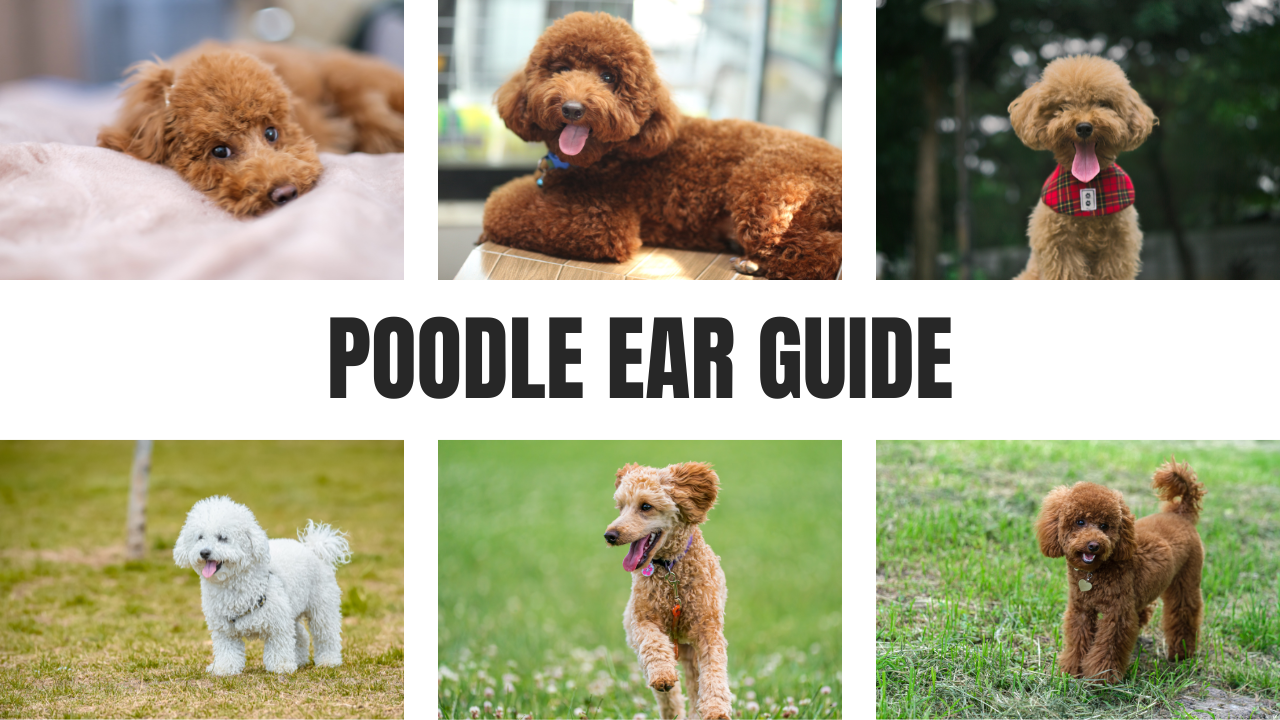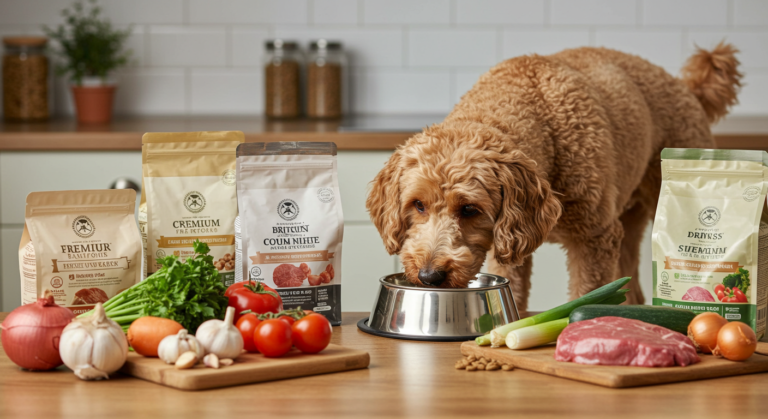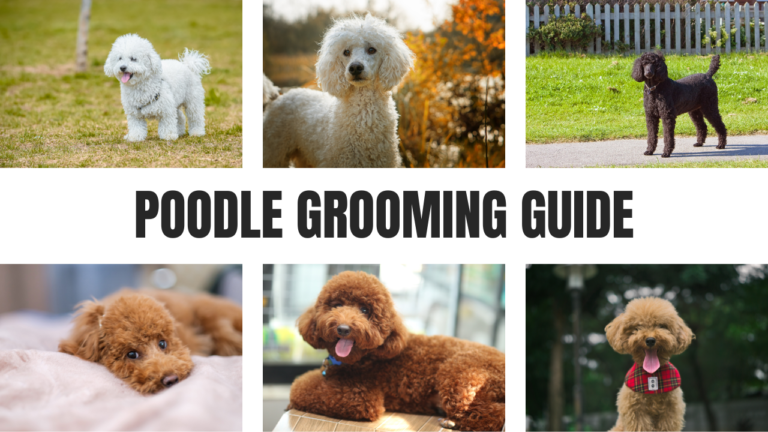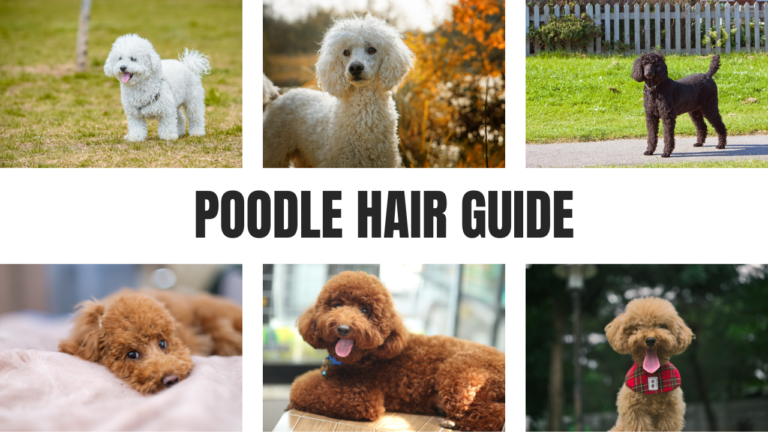The Ultimate Poodle Ear Guide for Pet Owners In 2025
Poodles have unique ear anatomy that requires special attention. Their floppy, fur-lined ears can trap moisture and debris, creating the perfect environment for infections if not properly managed.
Understanding how to care for your Poodle’s ears is crucial to maintaining their overall health and happiness.
From regular cleaning routines to addressing potential issues like allergies or infections, this guide covers everything you need to keep your Poodle’s ears healthy and comfortable.
Anatomy of a Poodle’s Ears
The ears of a Poodle are unique and require special attention to maintain their health.
The ear canal of a Poodle is deep, dark, and often moist, providing an ideal environment for issues such as yeast infections, bacterial growth, and even the accumulation of foreign objects like grass awns or seeds.

The ear canal is lined with glands that produce wax to protect delicate tissues, but excessive wax, combined with a moist environment, can lead to complications if not properly managed.
Additionally, Poodles’ ear canals often have hair that grows similarly to the fur on their body.
This hair can sometimes block airflow, further increasing the risk of infections and other ear problems.
At the bottom of the ear canal lies the eardrum, which is extremely sensitive and must be protected during cleaning or grooming.
Read More = The Comprehensive Poodle Grooming Guide You Need
Weekly Ear Examination
Regular examination of your Poodle’s ears is critical. A weekly check helps identify early signs of problems and ensures that the ears remain healthy.
During the examination, ensure the ears have a clean appearance with no dirt or debris.
A sweet smell indicates normal health, while any foul odor could suggest an infection.

Watch for brown or black material in the ear, frequent head shaking or scratching, and signs of discomfort such as crying when the ear is touched.
If any of these issues are observed, consult your veterinarian to address the problem promptly.
Routine checks will help you identify and manage potential concerns early, preventing them from escalating into more serious conditions.
Here are steps to follow during your weekly ear examination:
- Look for any visible dirt, wax buildup, or foreign objects in the ear canal.
- Check for redness, swelling, or discharge that might indicate an infection.
- Gently smell the ears to detect any foul odor, which could signal a problem.
- Observe your Poodle’s behavior for signs of discomfort, such as head shaking or scratching at the ears.
- Use a soft, damp cloth or cotton ball to clean around the outer ear if necessary, avoiding deep insertion into the ear canal.
Plucking Poodle Ear Hair
Plucking ear hair in Poodles is a debated topic. Some owners choose to pluck regularly, while others prefer to leave the ear hair intact unless it causes a problem.
No plucking is necessary if the hair does not obstruct the ear canal or lead to infections.
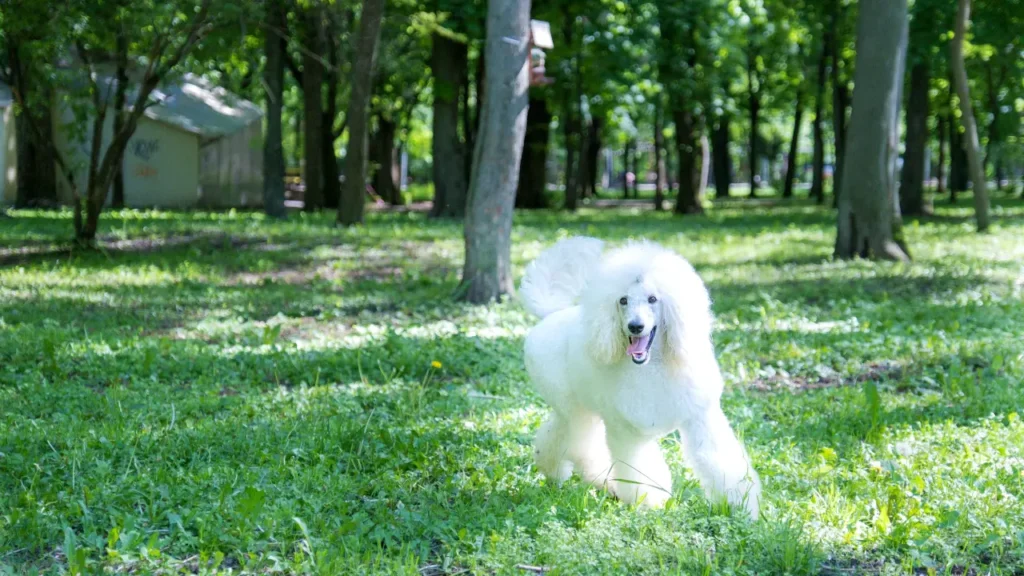
Thinning involves removing some hair to improve airflow, while complete removal eliminates all hair from the ear canal for better ventilation.
If you decide to pluck, use a well-lit area and place your Poodle on a grooming table.
Apply ear powder to enhance grip on the hair and use a hemostat or your fingers to gently remove small amounts of hair at a time.
Avoid plucking too much at once, as it may irritate the ear canal and create an environment for infections.
If you are unsure about the process, consult a professional groomer or veterinarian to ensure it is done safely.
Read More = Poodle Hair Guide You Need In 2025
Cleaning Poodle Ears
Cleaning your Poodle’s ears is an essential part of their grooming routine. Proper cleaning removes debris and wax, reducing the risk of infections.
Choose an ear-cleaning solution recommended by your veterinarian and avoid using Q-tips or sharp objects that can damage the eardrum.

Gently massage a small amount of the solution into the ear canal, allow your Poodle to shake its head to remove loosened debris, and use a cotton ball to gently blot excess moisture and dirt from the outer ear.
Ensure the ear is completely dry before finishing. For dogs that swim frequently, it’s especially important to clean and dry their ears after every swim to prevent moisture buildup.
Using Drying Agents
To maintain dry ears and prevent infections, drying agents can be used weekly or monthly.
A common home remedy involves mixing equal parts white vinegar, rubbing alcohol, and water.
This mixture helps lower the pH in the ear, making it less hospitable for bacteria and fungi.
Always consult your veterinarian before using home remedies, especially if your dog’s ears are irritated or inflamed.
Treating Infections
If your Poodle develops an ear infection, prompt treatment is crucial. Signs of infection include redness, swelling, pus, or a strong odor.
Mild infections can be managed by using a recommended ear cleaning solution twice daily for two weeks and then reducing the frequency to once daily for another two weeks. Severe infections require veterinary care.

Follow prescribed treatments, which may include antibiotics, anti-fungal medications, or ear drops. Avoid home remedies unless approved by your veterinarian.
Never use ear cleaners or medications if there is a possibility of an eardrum perforation.
Consult your veterinarian for a thorough examination and safe treatment options.
Managing Fungal Infections
Fungal infections thrive in dark, damp environments like a Poodle’s ear canal. These infections often require specialized care.
Keep the ear dry and clean, use acidic solutions such as diluted white vinegar to create an inhospitable environment for fungi, and apply anti-fungal medications as prescribed by your veterinarian.
Read More = Best Dog Playdate Ideas For Socialisation
Addressing Allergies
Chronic ear issues can sometimes be linked to allergies. Common allergens include certain foods like grains or specific protein sources, environmental factors like pollen or dust, and grooming products.
Switching to a grain-free diet or hypoallergenic products may alleviate symptoms.
If the problem persists, consult a veterinary dermatologist for allergy testing and tailored treatment.
DIY Ear Treatments
A purple ear wash recipe can be prepared using isopropyl alcohol, boric acid powder, and gentian violet.
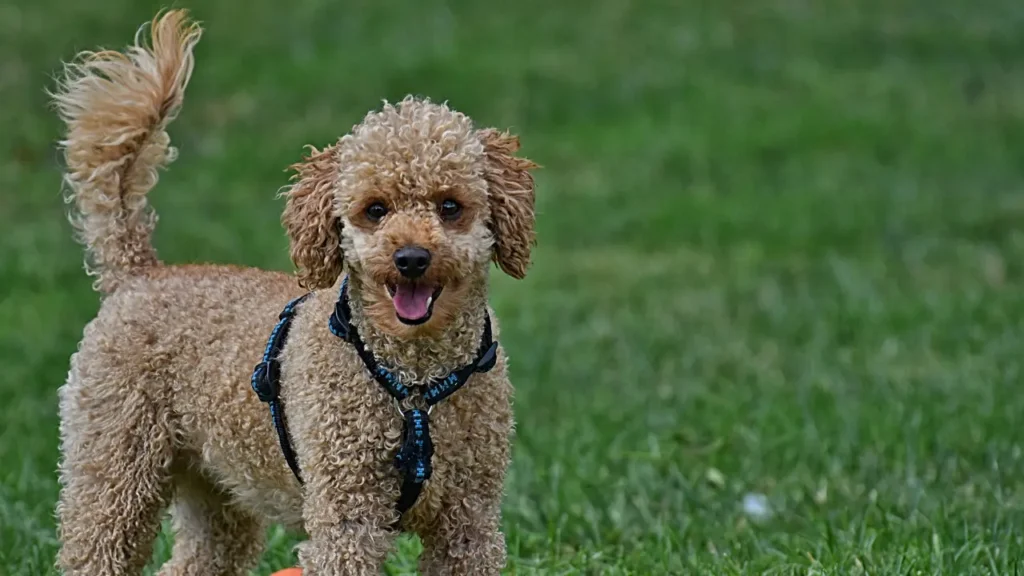
Shake the solution before each use, fill the ear canal with the mixture, massage gently, and blot excess fluid with cotton balls. Use twice daily for two weeks, then once daily for another two weeks.
For a dry ear powder, mix zinc oxide powder, boric acid powder, and iodoform powder. Apply a small amount monthly to keep ears dry and prevent excessive moisture.
FAQs Related To Poodle Ear Guide
How often should I check my Poodle’s ears?
Weekly checks are recommended to catch any potential issues early. If your Poodle has a history of ear problems or swims frequently, you may need to check more often.
Can I use cotton swabs to clean my Poodle’s ears?
No, cotton swabs should not be used as they can push debris deeper into the ear canal and may damage sensitive tissues like the eardrum.
Does plucking ear hair hurt my Poodle?
When done correctly and in small amounts, plucking should not be painful. Use an ear powder to improve grip and pluck gently to minimize discomfort.
What does a bad smell in my Poodle’s ears indicate?
A foul odor usually signals an infection. It’s best to consult your veterinarian for an accurate diagnosis and appropriate treatment.
Why are Poodles more prone to ear infections?
Their ear anatomy, which includes a deep, moist ear canal, combined with hair growth inside the ears, makes Poodles more susceptible to infections compared to other breeds.
How can I prevent my Poodle from getting ear infections?
Regular ear cleaning, drying the ears thoroughly after swimming, and maintaining a routine of weekly checks can help prevent infections.
What should I do if I notice redness or swelling in my Poodle’s ears?
Redness or swelling can indicate an infection or irritation. Stop any cleaning or grooming and consult your veterinarian immediately for guidance.
Can I use homemade ear-cleaning solutions on my Poodle?
Homemade solutions can be effective, but they should only be used with your veterinarian’s approval to ensure safety, especially if your dog’s ears are already irritated.
Final Words
Proper ear care is essential for the health and well-being of your Poodle.
By following a consistent routine of examination, cleaning, and treatment, you can prevent common ear problems and keep your Poodle comfortable.
If in doubt, always consult a professional groomer or veterinarian for guidance.
Remember, a proactive approach can save your Poodle from unnecessary discomfort and ensure they remain happy and healthy.

